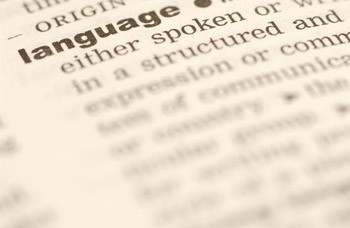In any case, there are a lot and these articles, this is about the sixth, provide an interpretation of many to help you better understand your financial environment.

1. Buy Back
What does it mean?
A buy back is a repurchase of previously sold shares or outstanding shares. Also referred to as share repurchase or as one word: ‘buyback’.
Comment:
Buybacks can be used by companies to purchase shares from their shareholders, and they can also be performed in derivatives and managed funds.
A buyback can be used to either boost the price of shares by reducing supply or to protect the company from shareholders who might be looking for ways to achieve controlling stakes or hostile takeovers. Through buybacks, companies basically invest in themselves, sending a message that they either feel their shares are undervalued or that it is the best investment option they have at that point. Irrespective of the reasons, buybacks increase the share of stock owned by the company, while also boosting earnings per share, and thus market value, for the shares that remain on the market.
Buybacks can be carried out by making tender offers to investors, and shareholders receive a premium for letting go of their participation, or by normal transactions on the open market over longer periods of time.
2. Margin
What does it mean?
Margin is the deposit needed to trade forex. It's the amount of money that you put up, and not the amount of money that you borrow. Say, you have $100 in your account and your leverage is 100:1. This means that you can trade up to $100,000 worth of currencies.
Comment:
In forex, the margin is the miminum amount - or deposit - required to place a trade. Think of margin and deposit as interchangeable terms.
Many brokers offer leverage of 100 to one, which means that your $1,000 deposit can get you as much as $100,000 in currency. Or, putting it another way, if you want to purchase $100,000 of USD/EUR at 100:1 leverage, you’ll need to cough up the 1 per cent margin, or $1,000.
Should the currency pair move in your favour by 1 per cent, your gain is catapulted to 100 per cent - a $1,000 profit suddenly becomes a $2,000 profit. Of course, a move in the other direction means your initial $1,000 deposit is completely wiped out.
3. Allocated Pension
What does it mean?
An allocated pension is a product purchased by retirees to convert their super savings into a regular income. Retirees use allocated pensions to pay themselves an income over a time period roughly equivalent to their life expectancy. Pension payments can be made monthly, quarterly, half yearly and yearly and are deposited directly into a retiree's bank account.
Comment:
Allocated pensions are by far the most popular product around for retirees looking to live off their super savings in retirement.
So why are allocated pensions so popular? Why don't retirees just withdraw their funds out of super and dump the lot into a term deposit or savings account, or even use their super to buy other investments such as an investment property or shares?
The major reason here is tax. Allocated pensions save you tax compared to most other strategies in retirement. That's because any investment earnings in an allocated pension - interest, dividends, capital gains - are tax free (age 60 and above). In comparison, interest made on a term deposit or rent received on an investment property held outside the super environment are subject to tax at the retiree's marginal tax rate.
When a retiree buys an allocated pension to house their super savings they don't have to say goodbye to the money forever. At any time, you can opt to withdraw all, or part, of your money from an allocated pension by simply filling in a couple of forms (check to see if there are any restrictions on the number of lump sum withdrawals allowed each year). You may use the money to buy a business or property, or to go on an overseas trip. Some retirees assist their children to buy a house. The allocated pension offers this needed flexibility.
So how much does an allocated pension pay? Well, that depends on how much you have to start with, and how old you are. The Government sets minimum limits, which are calculated when the pension is established and recalcuated at the beginning of each financial year.
You can change the amount and frequency of your pension payments whenever you need to, but you can't turn an allocated pension on or off like a tap. Once started, you must receive at least the minimum payment each year. The pension ceases when the account balance hits zero.
Allocated pensions aren't just cash accounts. Retirees have a raft of investment choices at their fingertips including Aussie and international shares, managed funds, listed property, fixed interest and cash. The aim of an allocated pension is to not simply eat into your capital, but to actually make money in retirement as well. Retirees drawdown a combination of capital and investment earnings to live on. Cleary, the more money you make on your investments, the longer your retirement money will last - and the more holidays you can enjoy.
Allocated pensions are not just popular with retirees (those who are permanently retireed and have reached preservation age). Pre-retirees, over age 55, looking to boost their super before retiring completely often buy allocated pensions in order to undertake the transition to retirement strategy. You can read more about this popular strategy below.
www.thebull.com.au
26th-September-2014 |